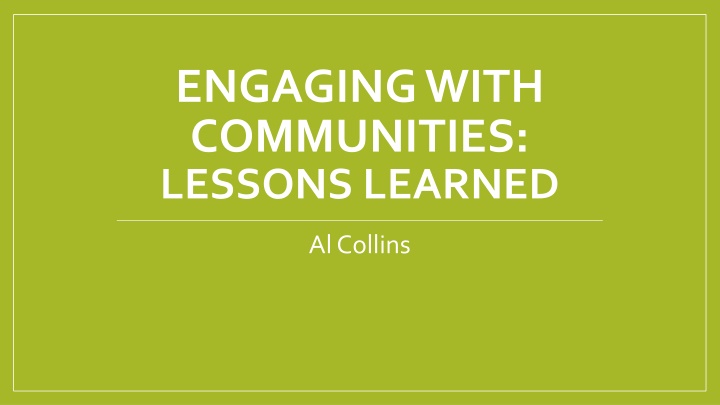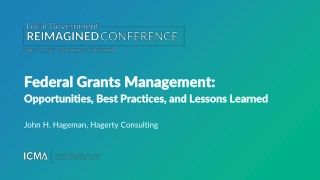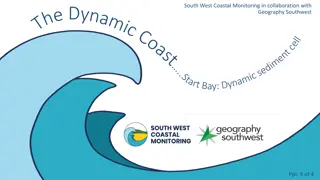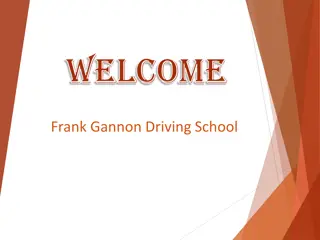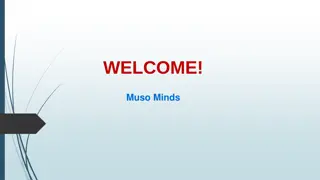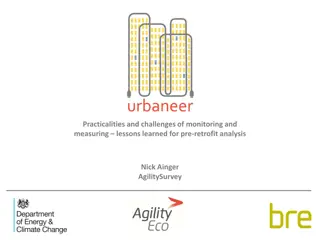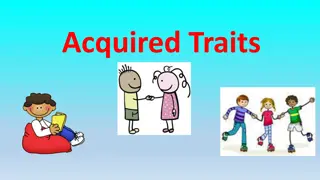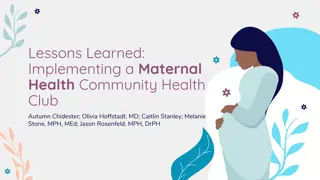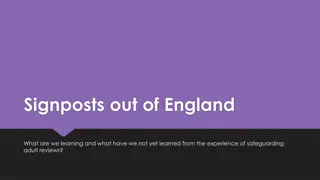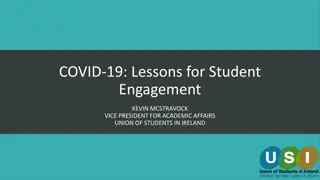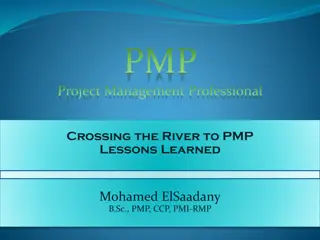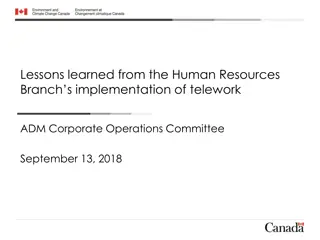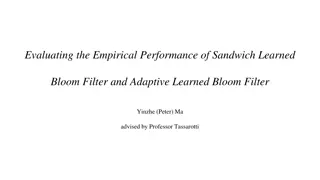Engaging Lessons Learned: Community Engagement Insights
Lessons learned from engaging with communities highlight the importance of tailored approaches and thorough research. Successful engagement involves listening, building trust, and adapting strategies based on community feedback. The two-phase process emphasizes the significance of understanding the community and aligning engagement tools with their preferences. Building trust through transparency, communication, and collaboration is essential for meaningful community partnerships.
Download Presentation

Please find below an Image/Link to download the presentation.
The content on the website is provided AS IS for your information and personal use only. It may not be sold, licensed, or shared on other websites without obtaining consent from the author.If you encounter any issues during the download, it is possible that the publisher has removed the file from their server.
You are allowed to download the files provided on this website for personal or commercial use, subject to the condition that they are used lawfully. All files are the property of their respective owners.
The content on the website is provided AS IS for your information and personal use only. It may not be sold, licensed, or shared on other websites without obtaining consent from the author.
E N D
Presentation Transcript
ENGAGING WITH COMMUNITIES: LESSONS LEARNED Al Collins
General Observations There is no one size fits all approach Every community is different and unique Understanding the community is critical to successful engagement Doing preliminary research prior to engagement is key to gaining understanding Listening is vital to understanding
Two Phase Process to Engagement Phase 1: Do Your Research Gain understanding of the Community Consider the use of a Screening Tool Also a good time to: Engage with Internal Project Development Team, Legal Group and Land group Work through confidentiality related to project details & private property Goal: Be prepared to share as much information as possible Start Development of technical Q s & A s
Phase 2: Engagement Mostly Listening Themes Small Groups work well Project Development Team available with technical information and answers Design Engagement that enables feedback on Community s terms Solicit input on needs and opportunities for benefits & focus on unaddressed needs Modify engagement tools to align with community s preferences Continue to validate findings on benefits and preferences In general, E.J. issues are advocated by faith based leaders
Building Trust Share information frequently and honestly Seek input early and often Answer phone calls and emails every day Partner with other organizations to assure the community will benefit from the project Assure that the community is prepared to participate in the project benefits Design mitigations upfront that prevent further burdens to the community Trust is not purchased, it s rented and rent is due every day
